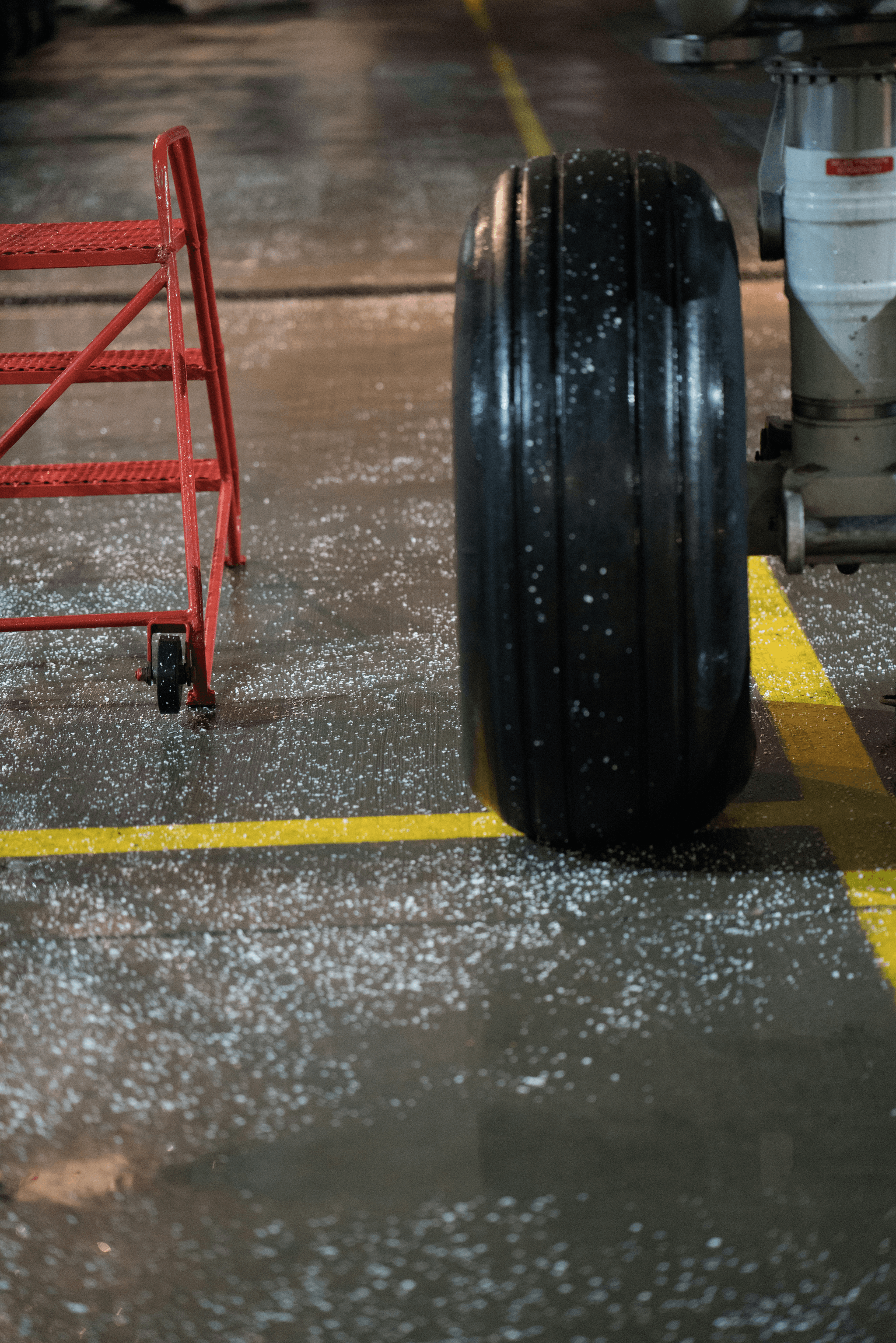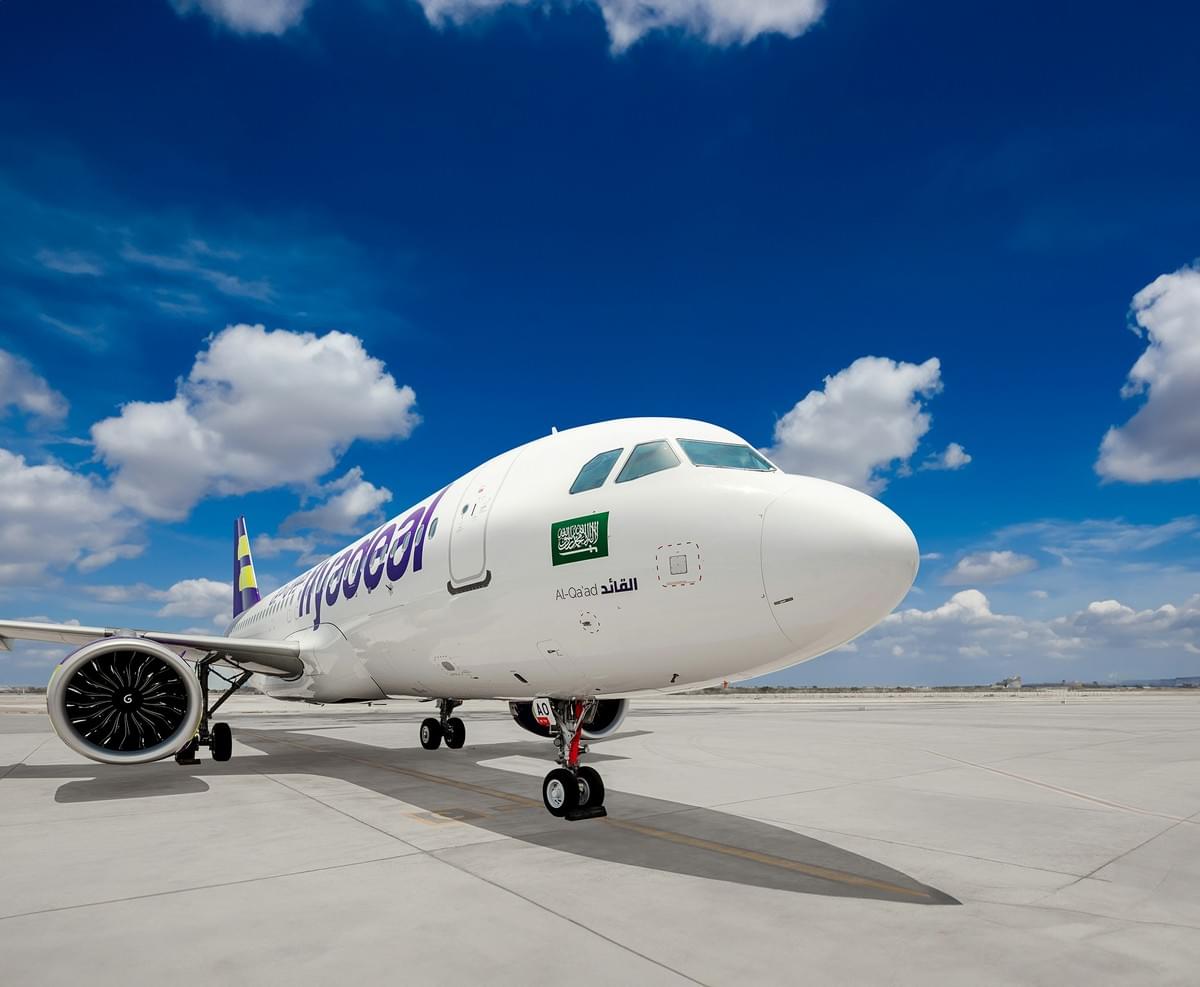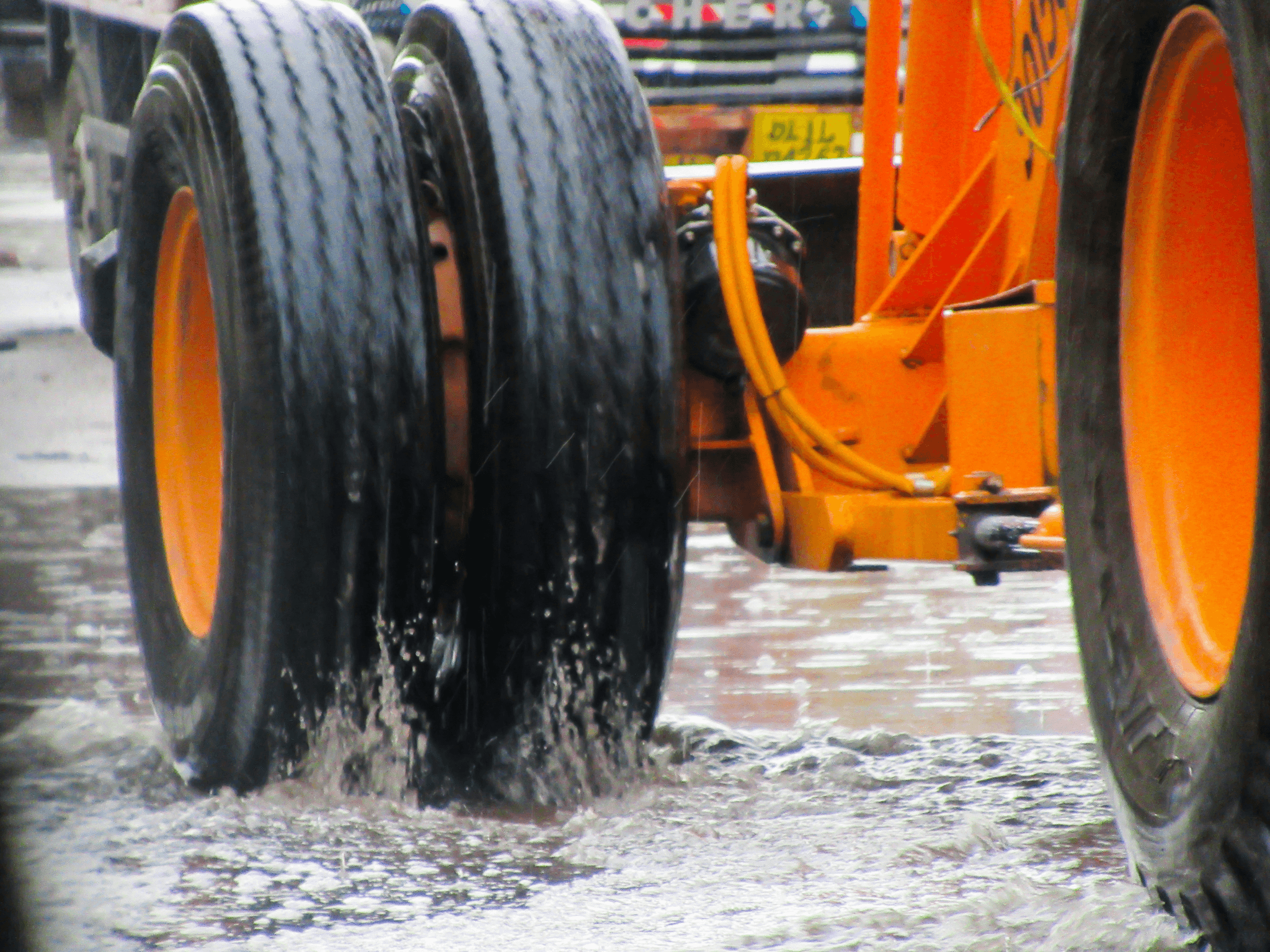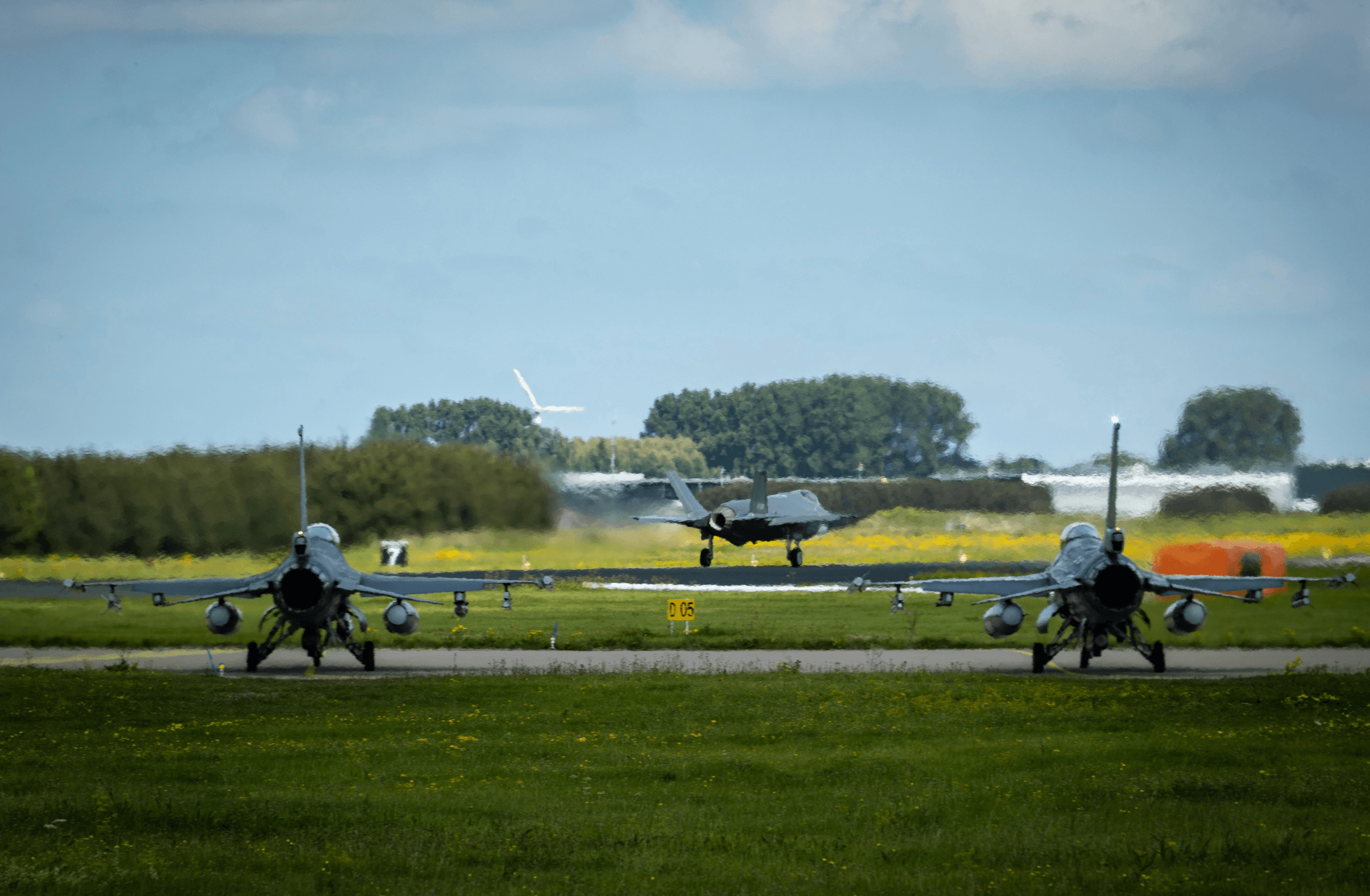Introduction

Runway friction testing is essential for ensuring safe takeoffs and landings at airports worldwide. The evolution of this testing method has led to the development of the Runway Friction Tester (RFT), a specialized device integrated into a one-ton truck for accurate measurements. RFT testing plays a crucial role in aviation safety, making it a vital aspect of airport operations.
What is a friction tester?
A friction tester, specifically the Runway Friction Tester (RFT), is a device used to measure the friction levels on airport runways. This ensures that aircraft can safely maneuver during takeoff and landing, preventing accidents and ensuring passenger safety.
RFT testing is essential for maintaining the safety and efficiency of airport operations. By regularly measuring the friction levels on runways, airport authorities can identify areas that may require maintenance or treatment to improve traction for aircraft. This proactive approach helps to prevent accidents and ensures that passengers can travel with peace of mind, knowing that their safety is a top priority for airport management.
The importance of RFT testing
RFT testing is crucial for maintaining safe operating conditions on airport runways, as it allows authorities to identify areas with low friction levels that could pose risks to aircraft operations. By conducting regular RFT tests, airports can proactively address any issues and ensure safe travel for passengers and crew.
Additionally, RFT testing has evolved to include advanced technology such as automated friction measuring devices and continuous monitoring systems. These innovations allow airports to gather real-time data on runway conditions, enabling them to respond immediately to changes in friction levels. This proactive approach not only enhances safety but also minimizes disruption to flight schedules and reduces the risk of accidents due to poor runway conditions.
The evolution of runway friction testing
The evolution of runway friction testing has led to the integration of RFT into a one-ton truck, allowing for more efficient and accurate measurements. This advancement in technology has significantly improved the accuracy and reliability of runway friction measurements, enhancing overall aviation safety.
The integration of RFT into a one-ton truck has revolutionized the way runway friction testing is conducted. This advancement allows for quicker and more comprehensive measurements, enabling airports to assess and address potential safety hazards more efficiently. By providing real-time data on runway conditions, this technology helps pilots make informed decisions, ultimately enhancing the safety and reliability of air travel.
Understanding Runway Friction Testing

When it comes to understanding runway friction testing, it's important to know how runway friction is measured. This involves assessing the grip between the surface of the runway and the tires of an aircraft during landing and takeoff. By measuring this friction, airport authorities can ensure safe operations for all flights.
How is runway friction measured?
Runway friction is typically measured using specialized equipment such as the Runway Friction Tester (RFT). These devices are designed to assess the skid resistance of a runway surface, providing valuable data for airport authorities to make informed decisions about necessary maintenance and safety measures.
Runway Friction Testers use a variety of methods to assess the skid resistance of a runway, including measuring the friction coefficient and determining how quickly a wheel can stop on the surface. This data is crucial for airport authorities to understand the level of safety and performance of their runways, enabling them to take proactive measures to address any issues. By regularly measuring runway friction, airports can ensure that their surfaces are safe for aircraft operations in all weather conditions.
Runway Friction Tester (RFT) explained
The Runway Friction Tester (RFT) is a crucial tool in aviation safety, as it allows for accurate measurement of runway surface conditions. Integrated into a one-ton truck, this equipment can be easily maneuvered across different sections of the runway to gather comprehensive data on friction levels.
The RFT is equipped with state-of-the-art sensors and technology that provide real-time feedback on runway conditions, allowing airport personnel to make informed decisions about maintenance and operations. By collecting data on friction levels, the RFT helps identify areas of the runway that may require attention, reducing the risk of aircraft skidding or hydroplaning during takeoff and landing. This proactive approach to runway safety is essential for ensuring the smooth and efficient operation of airports worldwide.
Runway Friction Tester Integrated into a one-ton truck
The integration of the Runway Friction Tester into a one-ton truck not only allows for efficient testing of various areas on the runway but also provides flexibility in reaching different sections of the airport. This means that airport authorities can easily access remote or less frequented areas for testing, ensuring comprehensive coverage and accurate data collection. Additionally, the mobility of this setup enables quick response to changing weather conditions, allowing for immediate adjustments in runway maintenance and operations.
Types of Friction Testing Equipment

Haisen's BHM01/02 Surface Friction Tester
Haisen's BHM01/02 Surface Friction Tester is a cutting-edge testing equipment that is integrated into a one-ton truck, allowing for accurate and efficient runway friction testing. With a safety design that maintains original vehicle systems and high-precision components for reliability, this tester ensures the safety and performance of the testing process. It also features specialized tires compliant with CAAC, ICAO, and FAA standards, providing precise measurements for RFT testing.
In addition to its advanced testing capabilities, Haisen's BHM01/02 Surface Friction Tester also boasts a user-friendly interface, making it easy for operators to control and monitor the testing process. The intuitive design allows for quick and efficient data collection, saving valuable time during runway friction testing. This feature is especially beneficial in high-pressure airport environments where accuracy and speed are essential.
Airport / Runway Friction Testing Products
Various airport and runway friction testing products are available in the market, each offering unique features to cater to different testing requirements. These products range from portable handheld devices to sophisticated integrated systems like Haisen's BHM01/02 Surface Friction Tester. They play a crucial role in ensuring the safety and efficiency of aircraft operations by providing accurate friction measurements for runway surfaces.
Another advantage of using specialized tires for runway friction testing is the ability to simulate real-world conditions more accurately. These tires are designed to mimic the weight and pressure distribution of aircraft landing gear, providing a more realistic assessment of friction levels. Additionally, specialized tires often come with advanced sensors and data collection capabilities, allowing for more comprehensive and detailed analysis of runway surfaces. This level of precision can help airport authorities make informed decisions about maintenance and improvement efforts.
Advantages of using specialized tires for RFT testing
Using specialized tires specifically designed for RFT testing offers several advantages, including precise measurements compliant with aviation regulations and standards such as CAAC, ICAO, and FAA. These tires are essential for achieving accurate friction readings on various runway surfaces under different environmental conditions, contributing to enhanced aviation safety.
Specialized tires for RFT testing also offer the advantage of durability and longevity, ensuring that accurate measurements can be consistently obtained over time. This reliability is crucial for maintaining safe runway conditions and preventing potential accidents or incidents. Additionally, these tires are designed to withstand the high speeds and heavy loads experienced during aircraft landings and takeoffs, making them a crucial component in ensuring the ongoing safety of aviation operations.
The Process of RFT Testing

Safety Design of RFT equipment
The safety design of the RFT equipment also includes a comprehensive maintenance schedule to ensure that all components are in optimal working condition. Regular inspections and servicing of the testing equipment, as well as the vehicle itself, are essential to prevent any malfunctions or breakdowns during testing. This proactive approach to maintenance not only enhances the safety of the testing personnel but also contributes to the reliability and accuracy of the friction testing results.
Reliability of RFT testing components
Reliability is key when it comes to RFT testing components, as accuracy and consistency are crucial for obtaining reliable friction measurements. The Runway Friction Tester (RFT) utilizes high-precision components and an industrial-grade laptop with a Chinese interface for reliable operation, ensuring that the data collected is accurate and trustworthy. This reliability is essential for making informed decisions related to airport operations and maintenance.
Additionally, regular calibration of RFT testing devices is crucial to maintaining their reliability. Calibration ensures that the components are functioning at their optimal level and that the measurements obtained are accurate. This process involves comparing the readings of the RFT with known standards to identify any discrepancies and make necessary adjustments. By regularly calibrating RFT testing devices, airport authorities can have confidence in the accuracy of the friction measurements and make informed decisions about runway maintenance and aircraft operations.
Calibration of RFT testing devices
Calibration plays a critical role in ensuring that Runway Friction Tester (RFT) devices provide accurate measurements. The RFT equipment features an accurate and easy-to-use external electronic calibration device, allowing for precise calibration before each testing session. This meticulous calibration process guarantees that the friction measurements obtained are consistent and dependable, providing valuable insights into runway conditions.
Additionally, regular maintenance and servicing of RFT testing devices is essential to ensure accurate and reliable performance. This includes thorough cleaning of the equipment, checking for any signs of wear or damage, and replacing any worn-out components. By keeping the RFT devices in optimal condition, operators can trust that the measurements obtained are truly reflective of the runway's friction levels.
The Impact of RFT Testing

Applications of RFT testing in aviation safety
RFT testing plays a crucial role in ensuring aviation safety by providing accurate and real-time data on runway conditions. This information is vital for pilots, air traffic controllers, and airport authorities to make informed decisions regarding takeoff, landing, and overall airport operations.
Achievements in RFT testing at various airports
The implementation of Runway Friction Tester (RFT) technology has led to significant achievements at various airports worldwide. With over 200 units in use, RFT testing has proven to be a reliable and effective method for assessing runway conditions and enhancing overall safety measures.
The future of RFT testing technology
As technology continues to advance, the future of RFT testing looks promising with ongoing developments in equipment design, data analysis, and integration with other airport systems. The evolution of RFT testing technology will further improve aviation safety standards and operational efficiency.
Conclusion

RFT testing has proven to be crucial in ensuring the safety and efficiency of airport operations. With the accurate measurement of runway friction, airports can make informed decisions to enhance safety protocols and optimize runway maintenance.
Benefits of accurate RFT testing
The accurate measurement of runway friction through RFT testing allows airports to proactively address potential safety hazards, reducing the risk of accidents and delays. By providing precise data on runway conditions, RFT testing enables airports to prioritize maintenance efforts and allocate resources effectively.
In addition, accurate RFT testing also allows airports to comply with industry regulations and standards, ensuring that they meet the necessary safety requirements. This can help airports avoid costly fines and penalties for non-compliance, as well as maintain a positive reputation within the aviation community. Furthermore, by consistently conducting RFT testing, airports can demonstrate their commitment to safety and quality, which can be reassuring for airlines and passengers alike.
The role of RFT testing in airport operations
RFT testing also plays a crucial role in identifying potential runway surface issues, such as rubber build-up or foreign object debris, which can compromise aircraft safety during takeoff and landing. By detecting and addressing these issues promptly, RFT testing helps to minimize the risk of accidents and ensures that runways are kept in optimal condition for safe aircraft operations. Additionally, the data collected from RFT testing can be used to develop proactive maintenance schedules, further enhancing the overall safety of airport operations.
Ensuring safety through effective RFT testing
Effective RFT testing is instrumental in upholding the highest standards of safety in aviation. By continuously monitoring and evaluating runway friction, airports can identify potential risks and take proactive measures to mitigate them, ultimately safeguarding passengers, crew, and aircraft.
